All About Repointing Brick | What Is Repointing Brick | When You Need Brick Repointing | Types of Repointing Brick
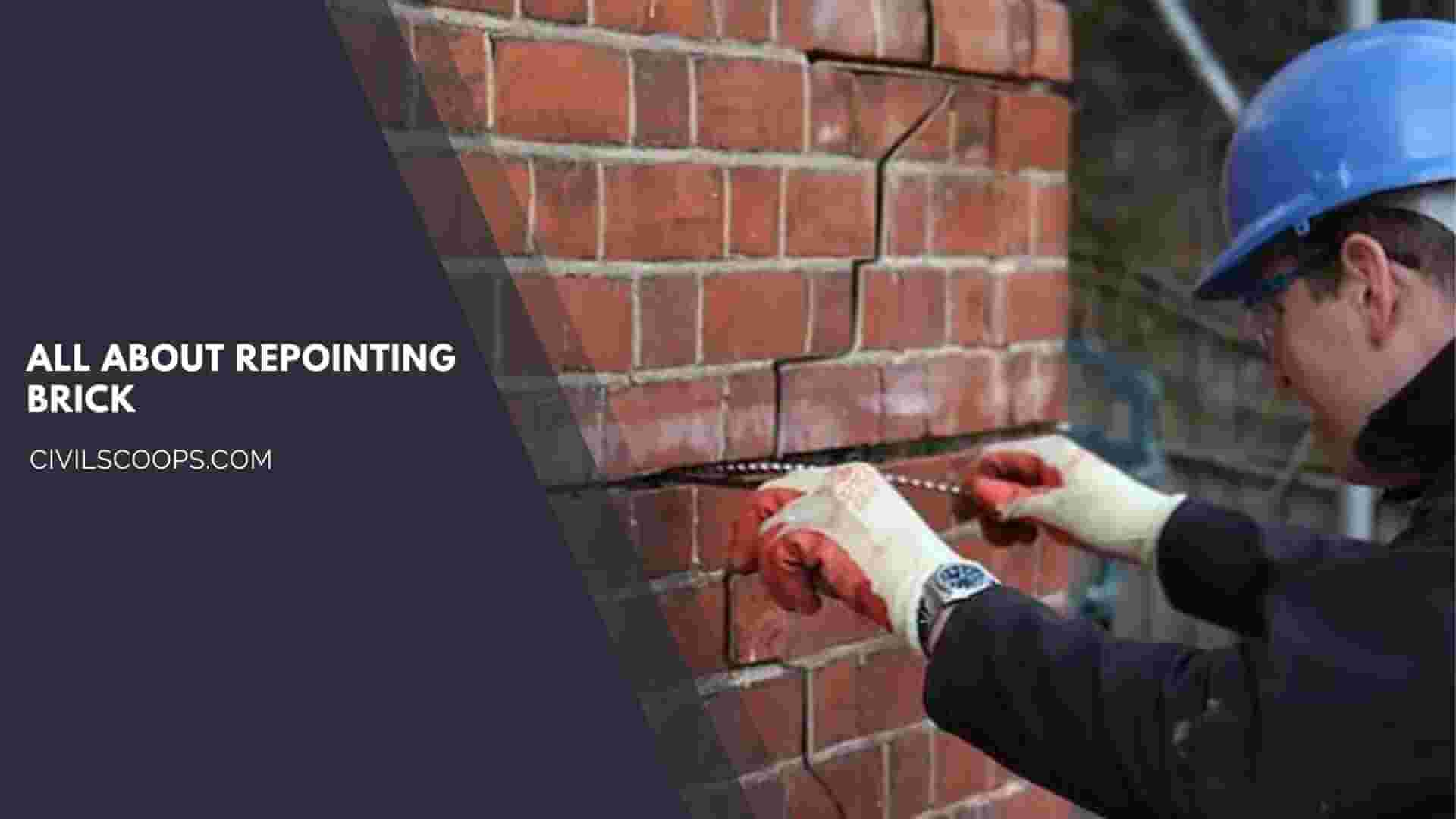
Table of Contents
What Is Repointing Brick?

Repointing brick is generally known as repointing of brick or repointing of brickwork. Repointing of brickwork is a basic process where you renews or repair the outer portion of your brickwork. In this process, we only take care of the cement mortar.
Repointing is done when the mortar between two consecutive brick joint is getting empty, then you need to start repointing operation.
Repointing is done to create a more beautiful outlook of the structure and it also resist the entry of water into the inside portion of that house.
So, basically repointing of brickwork is the process to refill the cement mortar into the bricks, stones, etc. Repointing of brickwork is a very easy and fast process and the labour cost is also not so much high & it does not take too much skilled labour.
When You Need Brick Repointing?
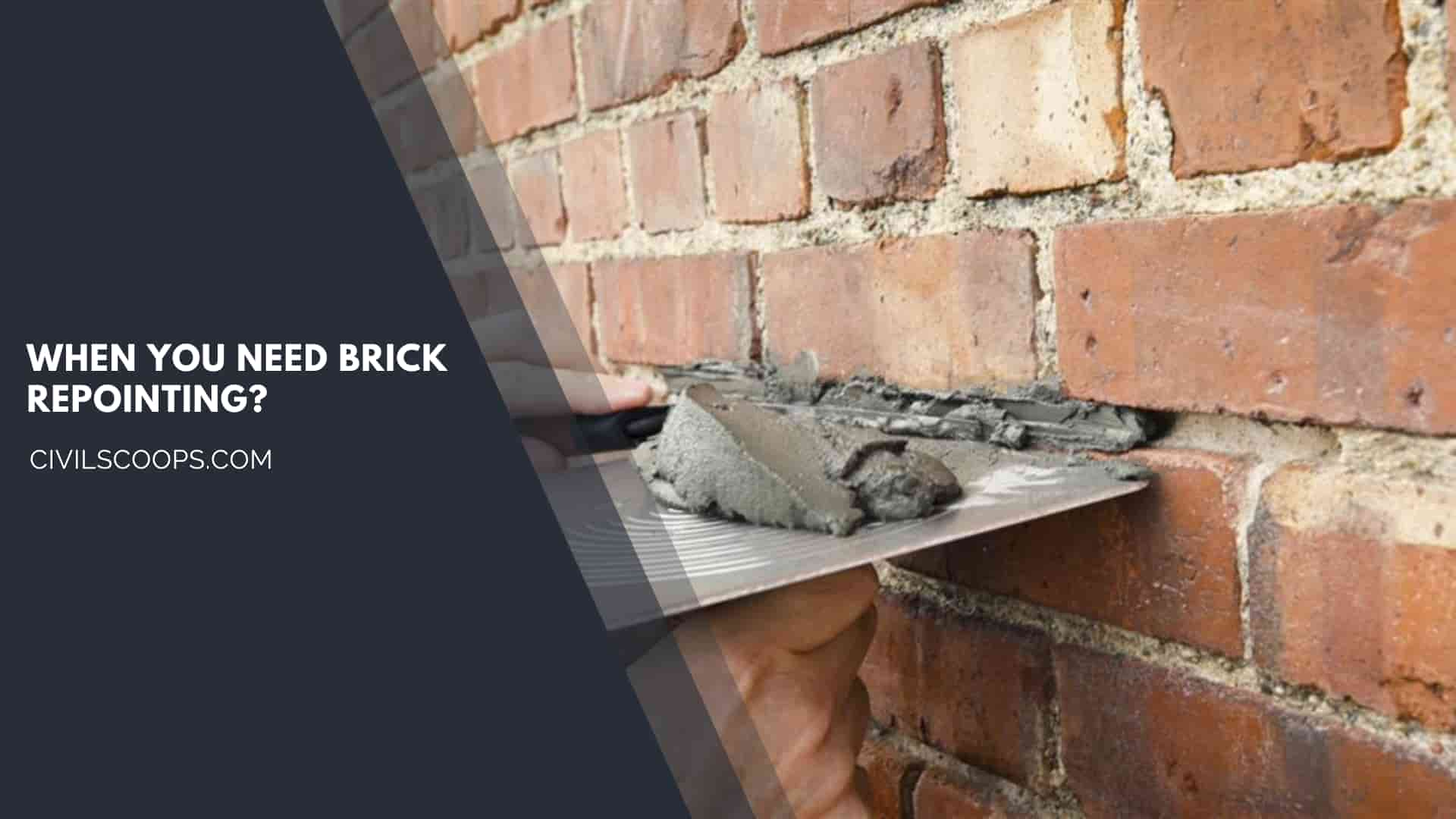
Brickwork is a very open type of structure and you need to take some proper crae about it. When the brickwork needs some repointing then there is must be some signs, those are-
- Damaged Bricks: If the bricks of your house got damaged then it reduces the beauty of your house. At that time you need to repair or repoint the mortar to the damaged bricks. If the bricks are over-damaged then you need to replace those damaged bricks as soon as possible.
- Unsuitable Pointing: It is a very major issue of the brick repointing, here, faulty repointing cause some damage in the wall. Cement mortar contains more moisture and that will reduce the strength of brick mortar joint. Sometimes, the whole structure will covered into frost then it will create the upper face of the brick into crumble.
- Efflorescence: Efflorescence is generally a commo0n problem of the bricks. Here, some white patches are arrived into the brick surface due to some excess moisture content. If bricks are found which have an efflorescence effect then it must be replaced.
- Clean Surface: The surfaces of bricks must be cleaned properly because if there is some amount of dirt is present then it will reduce the adhesion property of cement mortar. If there is some difficulties then the whole structure not be strong enough. So, we need to clear the brick surface carefully.
- Damp: Damp is a very common thing, when dampness is observed then it must be done some proper inspection and take required action. So, these are the signs when you need brick repointing.
Also Read: What Is Classification of Bricks | Classification of Bricks Different Base
Useful Article for You
- What Is a Highway Flyover
- What Is Grouting
- What Is a Pile Cap
- What Is a Bond Beam in Masonry
- What Is Sapwood
- What Is Crane
- What Is a Gable
- What Is Superelevation
- What Is Kerb
- What Is the Purpose of Washers
- What Is the Size of a Brick in Inches
- What Is Reinforced Masonry
- What Is Workability
- What Is Bond Breaker
- What Is Plasticizer in Concrete
- What Is Luminous Flux Vs Lumens
- What Is Caisson
- What Is an Undercoat
- What Is a Benchmark Surveying
- What Is Bracing in Construction
- What Is a Beam in Construction
- What Is the Standard Door Frame Size
- What Is a Spandrel Beam
- What Is a Fire Escape
- What Is a Weep Hole
- What Is Tie Beam
- What Is Fine Aggregate
- What Is Pony Wall
- What Is Flag Stone
- What Is Development Length
- What Is Cement Plaster
- What Is a Pitched Roof
- What Is Rafters
- What Is a Slab in Construction
- What Is a Monolithic Slab
- What Is Linear Distance
- What Is Shovel
- What Is Lintel in Construction
- What Is a Concept Sketch
- What Is Mezzanine Floor
- What Is Man Sand
- What Is Plaster Made Out of
- What Is a Floating Slab
- What Is Falsework
- What Is Bituminous
- What Is a Spillway
- What Is Curb and Gutter
- What Is Dampness
- What Is Lap Length
- What Is the Full Form of Fsi
- What Is Door Frame
- What Is Plinth Protection
- What Is Traffic Rotary
Types of Repointing Brick

There are generally four types of repointing brickwork is available, those are following-
1. Flush Pointing
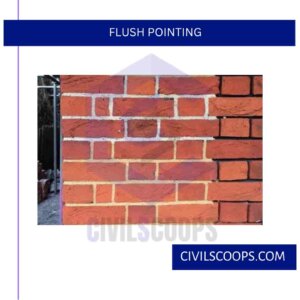
It is a very common type of pointing, here mortar is placed at the joint of two bricks and the edges are nicely and perfectly trimmed to maintain the same level of the wall.
The trimming operation is done by trowel and straight edge tools. Flush pointing does not prove a good appearance but it definitely resist the joints from dust, rain, etc.
2. Recessed Pointing
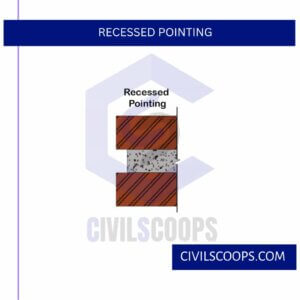
Recessed pointing is another very much popular type of brick pointing. In recessed pointing, the mortar is pushed at a distance of 5 mm or more from the edge of the brick joint.
It requires some well trained labour and the labour cost is also moderate. Recessed pointing provides a good outlook of that house.
Also Read: Mortar Vs Cement | Types of Cement | Types of Mortar
3. Beaded Pointing
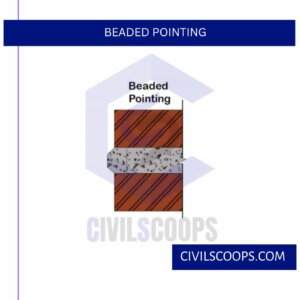
Beaded pointing is a special type of pointing where we use irom or steel metal a t the joint of two bricks.
The steel portion is naturally concave in nature. Beaded pointing provides a good aesthetic look of the house but the longevity of this pointing is very disappointing.
4. Struck Pointing
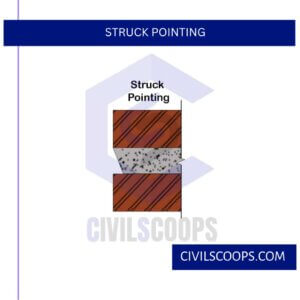
Struck pointing is a modification of flushed pointing. In struck pointing, the mortar is placed in inclined shape; the upper portion of the mortar is placed at a distance of 10 mm from the outer edge of the upper brick.
The main advantage of struck pointing is it drains rainwater very easily with a very short time period.
Useful Article for You
- How Wide Is a Cinder Block
- How Much Is a Coffered Ceiling
- How to Make Mortar
- How Long Does Hempcrete Last
- How to Use a Hand Sight Level
- How to Construction
- How to Build a Lean to Roof
- How Are Tunnels Built
- How to Layout a Building
- How Wide Is a Car Parking Space
- How Do Shear Walls Work
- How to Measure Concrete Slump
- How Are Bridge Foundations Built
- How to Use Washers with Screws
- How Dense Is Sand
- How High Is a Window from the Floor
- How to Fix Spalling Concrete Foundation
- How Does a Beam Bridge Work
- How Do They Pour Concrete Under Water
- How Does a Sewer System Work
- How High Are Countertops
- How to Seal Brick Wall Interior
- How to Resurface Cement
- How to Use Portland Cement
- How Is Plaster Made
- How to Find Fineness Modulus
- How to Get Rid of Spray Paint Smell on Metal
- How Many Types of Slope Are There
- How Big Is a Stair Landing
- How Does Rebar Help Concrete
- How to Identify a Load Bearing Wall
- How to Get Paint Off Concrete Without Chemicals
- How to Fix Water Damaged Drywall
- How Much to Get Septic Pumped
- How to Cut a Nail or Screw
- How Long Does Wet Concrete Take to Dry
- How Is Varnish Made
- How Does Ejector Pump Work
- How Does a Cantilever Bridge Work
- How Does Hydrometer Work
- How to Get Wet Blood Out of Carpet
- How to Build House on Slope
- How Thick Is Plaster Wall
- How Suspension Bridges Work
- How to Seal a Concrete Roof
- How Was Cement Invented
- How to Calculate Area of Steel
- How to Check Silt Content in Sand
- How a Building Is Constructed
- How Are Roads Classified in India
- How Many Types of Cement in India
- How to Find Contour Interval
5. Rubbed, Keyed or Grooved Pointing
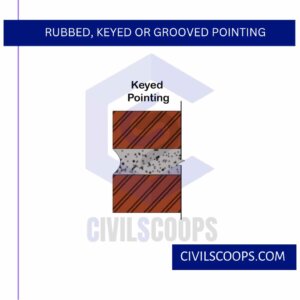
It is also a modified part of flushed pointing where a grooved is made by a special hand tool. This type of pointing provides a beautiful outlook.
6. Tuck Pointing

Tuck pointing is similar to groove pointing. Here, we also create a groove which is 3 mm depth and 5 mm width. After creating groove, it will fill with cement mortar.
7. V Pointing
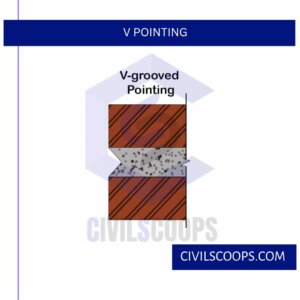
V pointing is a special type of pointing where, the mortar is placed in a joint the face of mortar is finished like V notch.
8. Weathered Pointing

Weathered pointing is the reverse operation of the V notch. In weathered pointing, a V-like portion is projected from the joint of two brick.
Tools and Materials Required for Repointing Brick
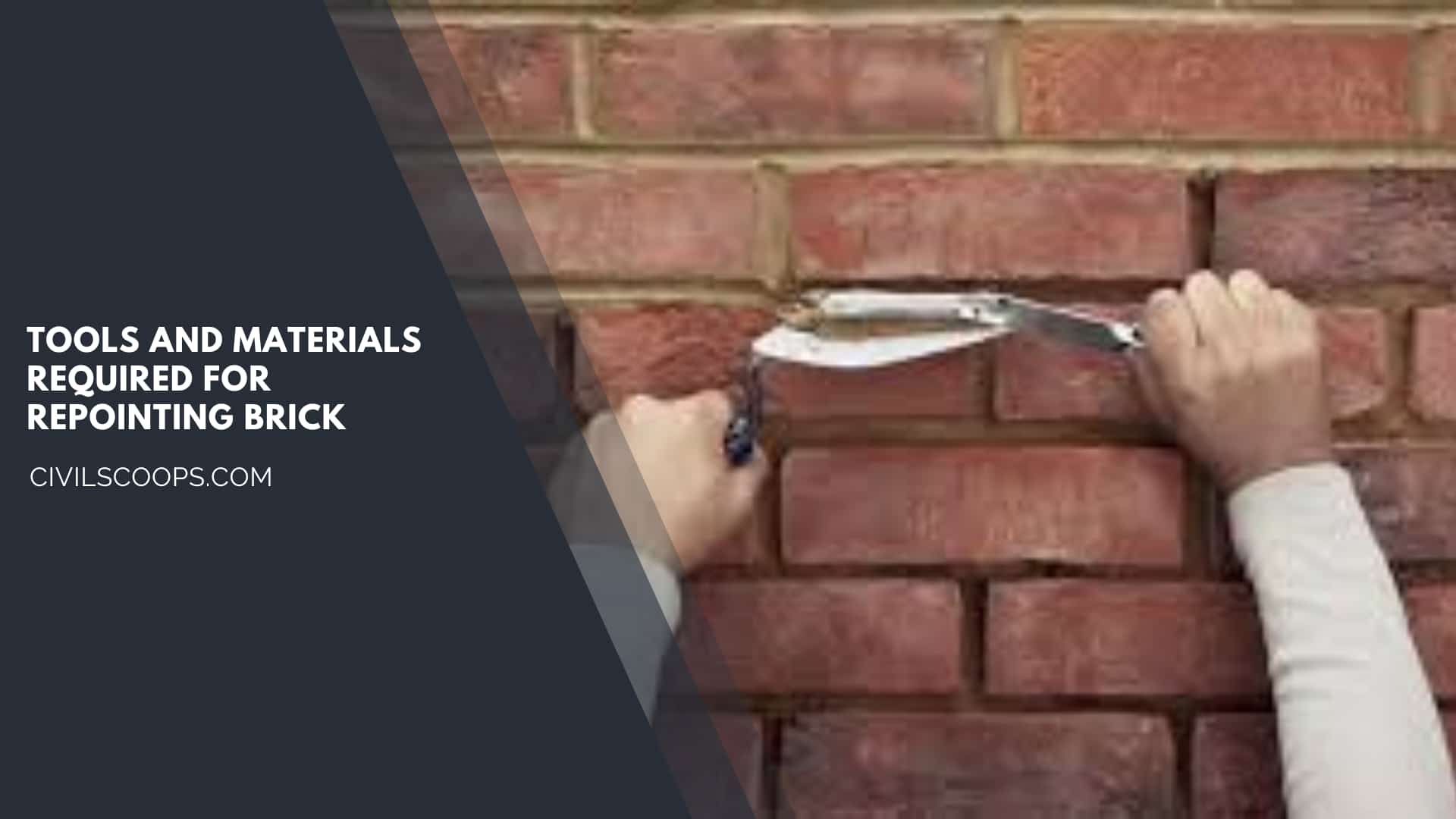
There are naturally various types of tools are required for repointing bricks, those are in the following
- Brick Hammer
- Pointing Chisel
- Paint Brush
- Bucket
- Pointed Trowel
- Finishing Trowel
- Margin Trowel
Different materials are also used to repoint the bricks, those are
- Cement
- Sand
- Lime
- Water
- Admixtures
[su_box title=”FAQ” style=”default” box_color=”#333333″ title_color=”#FFFFFF” radius=”3″ class=”” id=””]
What Is Repointing Brick?
Brick repointing consists in removing a portion of the deteriorated mortar and redoing the joints with new mortar. Repointing halts any further water infiltration through the mortar and behind the brick wall – which avoids any mortar crumbling or bulging brick and saves the wall (or any part of it) from collapsing.
What Mix for Repointing Brickwork?
A typical mortar mix for Repointing purposes, for use in an area subject to normal weather conditions, would comprise 1 part Portland Cement, 1 part Lime and 5½ parts Sand.
What Type of Mortar for Repointing Brick?
type O mortar mix
However, type O mortar mix is ideal for repointing and similar repair work on existing structures, due to its consistency and ease of application.
What to Use for Pointing Bricks?
Pick up some mortar on a large trowel and then, using a pointing trowel, work smaller amounts into the horizontal and vertical gaps between the bricks. You might find it easier to fill the vertical joints with a tool known as a margin trowel.
What Is the Average Cost for Brick Pointing?
Average Tuckpointing Cost
According to HomeAdvisor, it costs between $3 and $7 per square foot to tuckpoint brick and between $8 and $12 per square foot to repoint brick. Tuckpointing for an 8 by 8 wall runs between $190 and $450. For chimneys, the cost is often a bit more expensive.
What Is Tuck Pointing Brick?
Tuckpointing, sometimes referred to as repointing or brick pointing, is a process to finish or repair mortar joints between bricks or stones with a narrow ridge of lime putty or fine lime mortar.
What Do You Use to Tuck Point Brick?
Materials and Tools for Tuckpointing
- Angle grinder, 4-1/2-inch.
- Mortar removal blade (4-1/2-inch) for angle grinders.
- Wheeled raking tool.
- Toothed masonry hand chisel.
- Pointing trowel, 3/8-inch.
Is Brick Pointing Expensive?
It costs between $3 and $15 per square foot to repoint brick, though the average homeowner pays $8 per square foot. Costs can rise to $15 per square foot or more depending on the materials used, local rates, and the mason’s experience.
Flush Pointing Brickwork
Flush pointing is when mortar is pressed hard into the raked joints and finished off flush with the edge of masonry units. The edges are then neatly trimmed with a trowel and straight edge.
Best Mortar for Repointing
TYPE O. Next is Type O mortar which has a minimum strength of 350. This type is best used with soft brick or soft stone, primarily in interior, above-grade, non-load bearing applications. It is ideal for repointing mortar joints and similar repair work.
Best Mix for Pointing Brickwork
Brick pointing mortar is best mixed at 1-2-9 (by order listed above which is the standard mortar ratio order: cement-lime-sand) by volume. This results in a lime rich mortar that ends up being… sticky, in field terms. To make it white, you use white cement and white sand.
What Is the Best Mix for Pointing Brickwork?
The standard ratio for average mortar mix is 3:1 or 4:1 for bricklaying. If you are using a pointing mix, then you should have a ratio of 1:4 or 1:5 mortar to sand. As for concrete, it depends on the strength you need it to be at.
[/su_box]
[su_note note_color=”#F2F2F2 ” text_color=”#333333″ radius=”3″ class=”” id=””]
Like this post? Share it with your friends!
Suggested Read –
- All About Wall Putty
- All About Mix Design
- Different Types of Stucco
- All About Prismatic Compass Surveying
- Dynamic Vs Kinematic Viscosity (Difference & Definition)
[/su_note]
Originally posted 2023-10-19 10:11:22.
